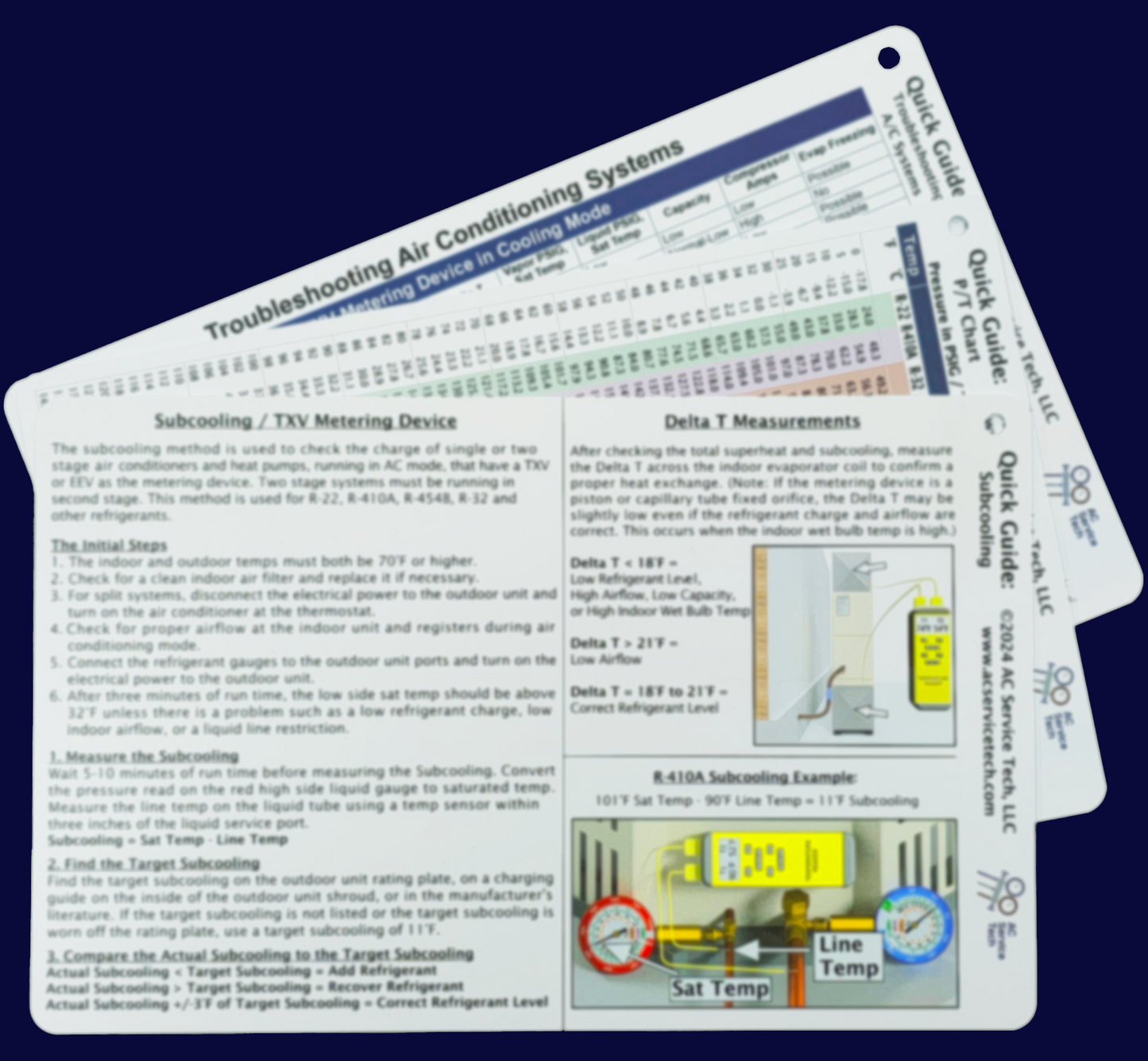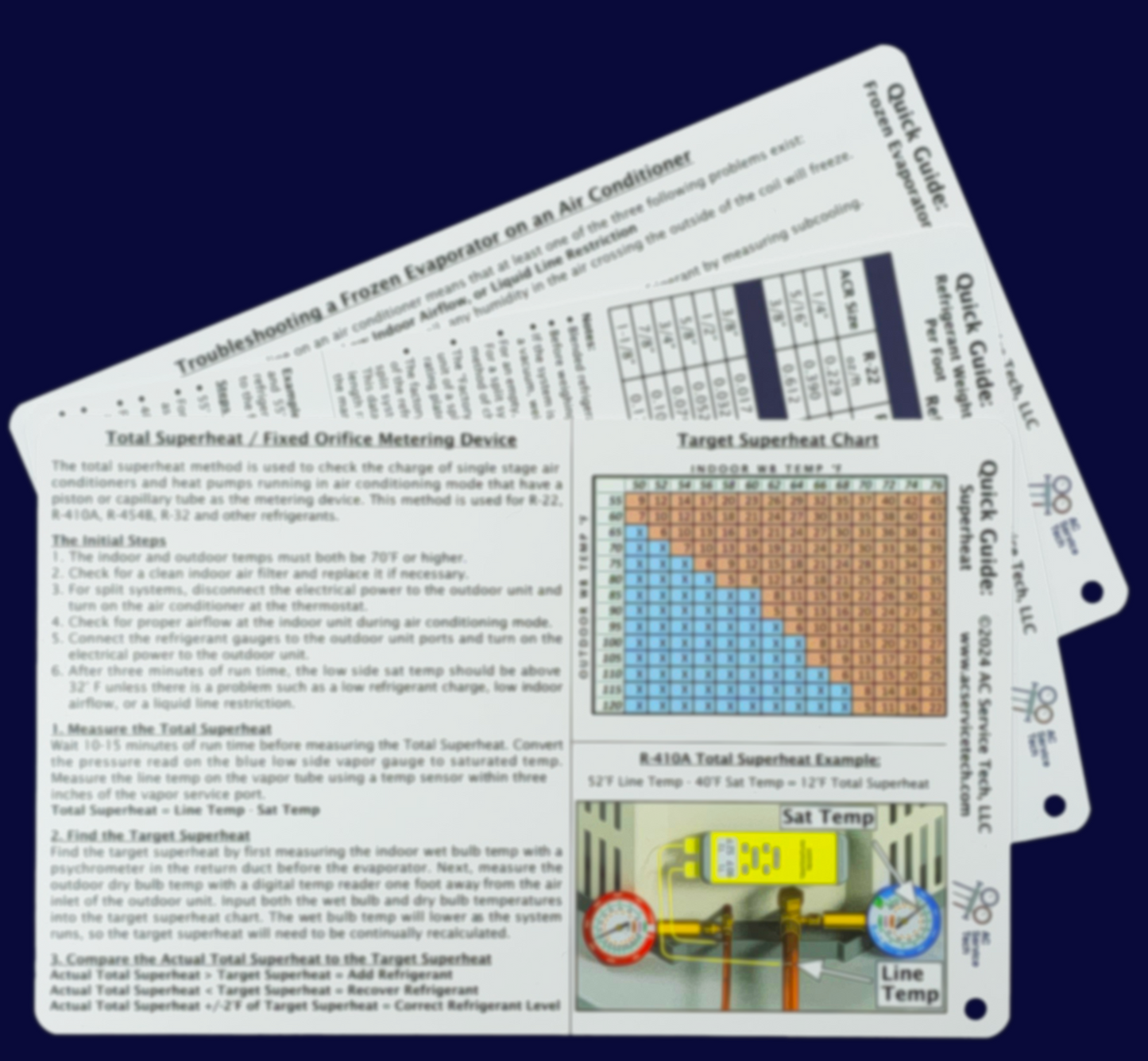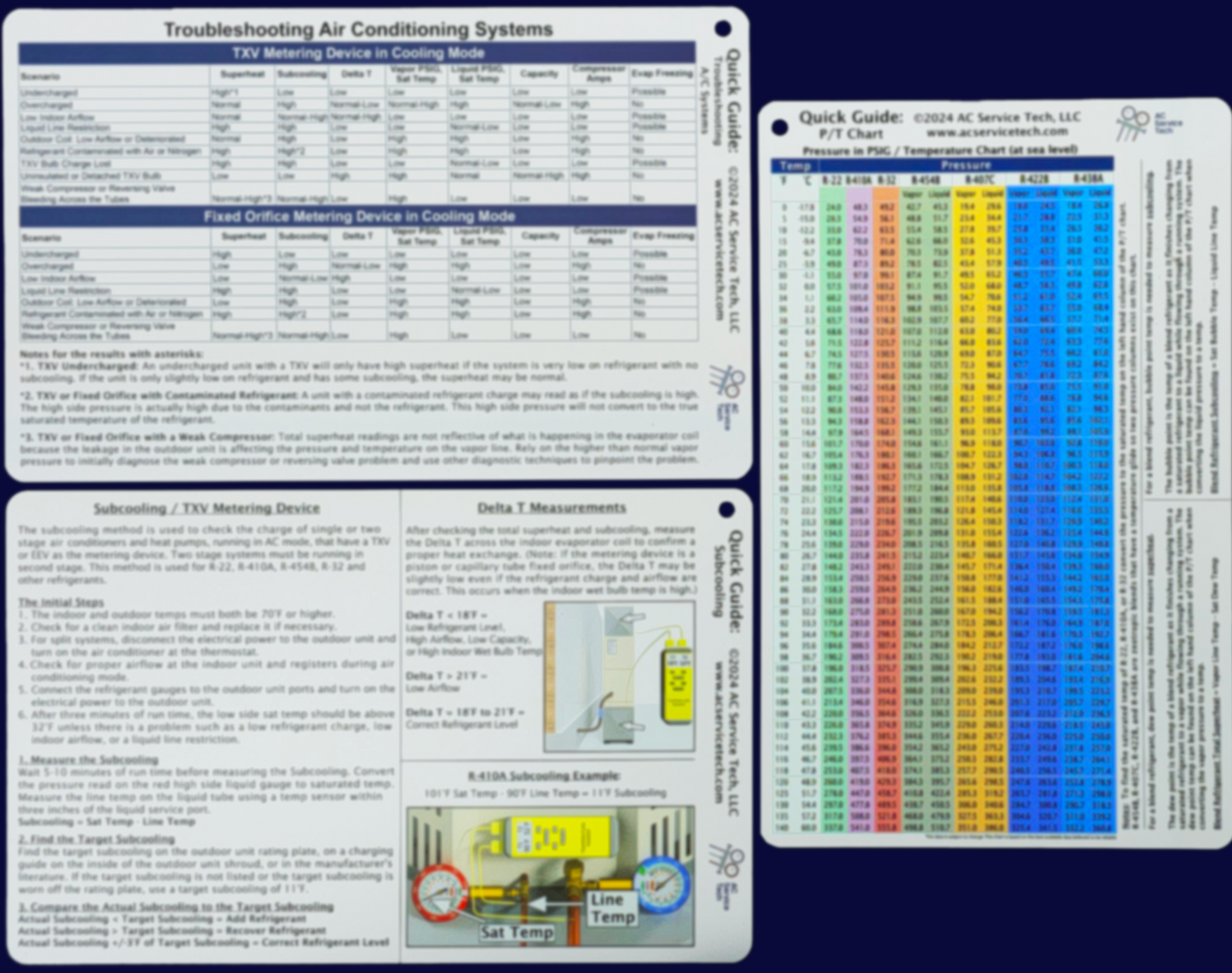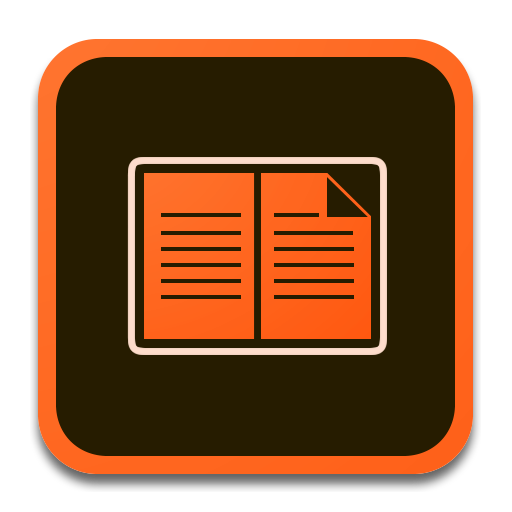AC Service Tech LLC
HVAC Quick Reference Cards for Refrigerant Charging and Troubleshooting
HVAC Quick Reference Cards for Refrigerant Charging and Troubleshooting
Couldn't load pickup availability
Read if Buying an E-Book!
Read if Buying an E-Book!
This file is an .epub format and the book itself is 326 pg. This book cannot be printed and will require an e-reader app for viewing.(Suggestions below!) This format is compatible with most e-readers on desktop, phones, and tablets, however we suggest the following, as they seem to work the best:
- Google Play Books App for Android/Samsung/Google based phones and tablets.
- Google Play Website for PC computers.
- Apple Books App for iPhones and iPads.
- Adobe Digital Editions for PC and Mac computers.
Links to each app are provided at the bottom of this page!
Each of these apps should be available in the app store on your device for free. (Currently not available in Kindle format). This format provides the reader with the ability to zoom and access a clickable table of contents depending on your device. Best of all, you can now take your e-books just about anywhere you want to go!
These three UPDATED HVAC quick reference polystyrene cards are double sided and designed to be used with Air Conditioners and Heat Pumps to measure the refrigerant charge level in a unit, charge refrigerant, troubleshoot refrigerant based problems, and measure heat transfer to determine if there is a problem.
- Use the P/T Chart to find the Saturated Temperature of the common refrigerants R-32, R454B, R-410A, R-22, R-407C, R-422B, and R-438A.
- Use the Guide to determine how to find the Bubble and Dew Saturated Temps of Blend Refrigerants.
- Use the Refrigerant Weight Chart to calculate the amount of refrigerant needed per foot of tubing R-32, R454B, R-410A, R-22, R-407C, R-422B, and R-438A.
- Use the Guide to weigh in the full or partial refrigerant charge into an empty vacuumed unit.
- Find the Target Subcooling to measure the refrigerant level of systems with a TXV metering device.
- Use Subcooling to determine if a system is undercharged, correctly charged, or overcharged.
- Use Delta T to determine if the system is exchanging heat properly.
- Find the Target Superheat to measure the refrigerant level of systems with a fixed orifice metering device.
- Use Total Superheat to determine if a system is undercharged, correctly charged, or overcharged.



Need an E-Reader?
If you are looking for an E-Reader to open our book on your device, be sure to check out the free options below!



